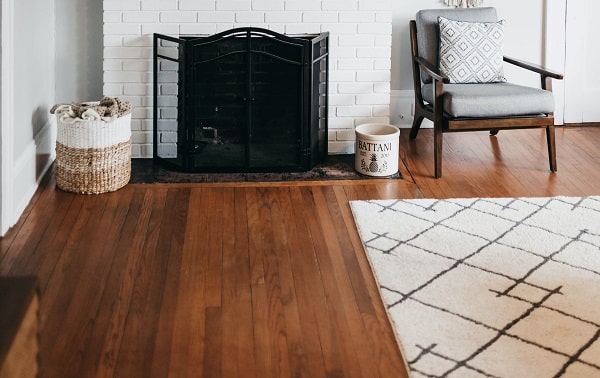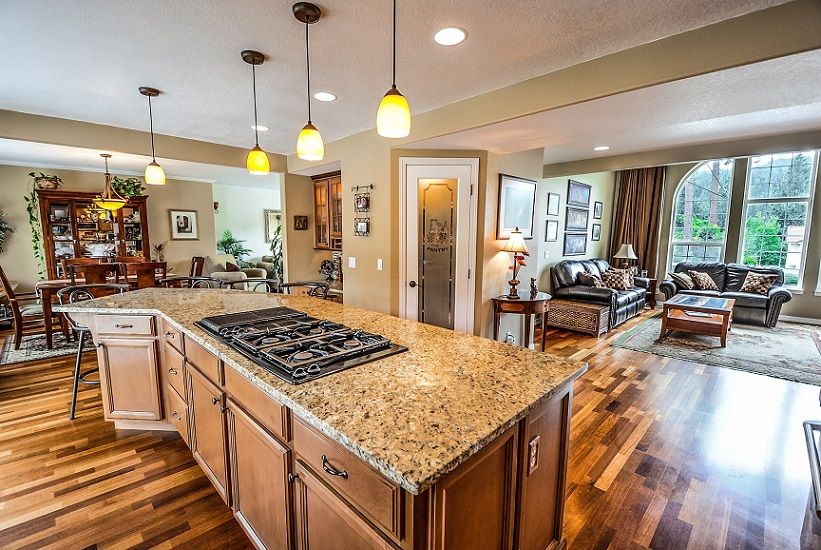by Linea Lorenzo
To begin, it is important to know the different aspects to consider when choosing hardwood floors. The first, no doubt, is its beauty. Natural wood has gained its prestige from this point of view. But there is much more to attend. It is important to know the different options and their characteristics before making a decision.
Contents


Solid wood is generally what the vast majority consider when they envision hardwood flooring. It comprises of solid bits of wood from your favored species. The whole hardwood board is built from that wood. Individuals like solid hardwood for its nice-looking natural beauty. It gives your home a warm, bona fide appeal, regardless of the species. Solid wood is available in 3/4 to 5/8 inches wide. It can be coated and sanded as many times as you want in its lifetime. It is vulnerable to changes in dampness and isn’t prescribed for basements.
It’s incredibly durable and if rightfully installed, maintained and taken care of as directed you’re guaranteed for it to last a lifetime. The drawbacks to solid hardwood are its high cost and powerlessness to dampness harm. Try not to utilize it in rooms with high measures of moistness.
Pros
Cons
Engineered hardwood floor is a facade of genuine wood stuck to a few layers of wood underneath, like pressed wood. This gives the wood superb security after some time and settles on it a decent decision for any zone of your home, including underneath basements.
Considering the thickness of the hardwood facade, engineered hardwood floors must be sanded and revamped on more than one occasion during its life Engineered hardwood has a piece of wood on the top surface. This gives the natural look when used on floors. Always known as man-made or manufactured wood, it was initially made to help overcome the weak points of regular wood. For instance, it addresses well issues like susceptibility to dampness and warping.
The rates of engineered flooring options often become higher following the facade thickness on the top wood, style, wood species used, and brand. So, in the case of budget-friendliness has a vital role during your decision-making process. Although this type of floor looks like a solid plank since it is thicker. It consists of many compressed layers. It has two components including 3 to 12 fiberboard, plywood, or unfinished hardwood at the core and bottom part. time.
One downside to engineered wood is that it can’t be sanded down or refurbished as often as you could with genuine hardwood floors as a result of the slim top facade. In any case, you can apply a similar amazing coating to engineered wood floors that you can to traditional hardwood, making them resistant to tear.
Pros
Flexible installation: the flexibility of installing engineered floors over other floors makes it better because it can be done without any effectiveness limitation and still bring out the balance. Because of this, you don’t require to change the subfloors in your home rather level them to fit the hardwood floors well.
Ecofriendly: Engineered hardwood is designed from both scrap and organic materials. It is not wholly collected from a single tree species, but it uses fiberboard and plywood on the bigger part of this floor. And a thinner coating of finished wood is used on top. The process is useful to ensure reuse of the wood while also the room is covered with fewer trees.
Easy to maintain: Engineered hardwoods are usually smooth enough so do not easily trap dirt and other allergens. This makes it easily and quickly cleaned even with just a wet mop or a special cleaner. Caring is done like it is for the traditional hardwoods. If possible, it must be swept, regularly vacuumed and kept without stagnant water or scratches. Considering periodic polishing or refinishing is essential to keep its original shape.
Cost: despite giving a great finish that effectively emulates any other finish, it costs less per square meter compared to other counterparts. Subsequently, the engineered wood guarantees you investment funds to channel to different uses and modify your house decor.
Mold safe: Unlike other floor materials, engineered sheets contain no unfavorably components, thus makes them perfect for sensitive individuals. Because of the melamine boundary, the floor is mold resistant and simple to clean pet residue off, therefore not sparking any breathing allergies. ensure you mop the floor consistently providing you don’t use any chemical abrasives.
Cons
Hard to repair: Hardwood floors are hard to fix when harmed as they expect one to remove the entire square once wrecked. This is not normal for wood floors which can be renovated upon harm. Not at all like cement and tiled floors, an engineered wood that is inadequately installed can’t be fixed without hauling out a huge piece of the floor.
Skills required to install: the person installing your floor should have the required skills to avoid breakages and cracks soonest after installation.
Underlay needed: in-case installed with no underlay, engineered wood will undoubtedly produce a void sound based on the kind of sub-floor. To turn away this sound, an underlay is needed when installing as may add the expense of putting up your floor.
Non-biodegradable: Although engineered floors are environmentally friendly, they are not biodegradable, and all things considered, they contaminate nature when they are discarded. Far more atrocious, the chemicals they contain are hurtful to breathing framework henceforth may bring about breathing issue when breathed in.
Doesn’t help resale: apart from natural wood flooring, engineered wood flooring doesn’t build the resale worth with an impressive edge since they cost less expensive than natural wood floors. In any case, in contrast to carpeting, the wood boards give your home a more engaging look which propels purchasers to put resources into your property henceforth higher odds of selling your property.
Almost every first-time homeowner and remodeler find it hard to choose which flooring material to go with. The market has seen the hot trend of hardwood flooring to gain momentum daily. While it is hard to notice, there are different hardwood floor types including the solid and engineered hardwood.
Without doubts, while investing in a flooring option, the ease to clean is an important aspect. As far as it the most commonly used area in the home, you will not want to keep following complex care guides. This is frustrating because if you miss something it means you have compromised on quality. Well, both types of flooring need regular maintenance methods including sweeping, vacuuming and even immediate cleaning of spills.
This means people often confuse the two without noticing the key differences. Of course, choosing a suitable floor material has never been easy. But despite your needs, both provide a stylish and long-lasting look over time. If you need the best one for you it is vital to consider comparing the types of floors.
 |
 |
 |
 |

About Linea Lorenzo
Linea was born to love drawing and just a few tech gadgets. While not working or sleeping, he often spends hours to look through the coolest, latest gadgets at different shopping sites, drooling about them. He also likes to keep things clean and tidy - now that the reason you see so many cleaning devices and electronics reviews at linea.io. Ah yes, he made the site also just for that. Occationally, he invited friends to share their expertise around here too. Linea received Bachelor of Arts in Arts & Letters at Sacramento State University.
 |
 |
 |
 |
Good Ones for You
You can Get FREE Gifts. Furthermore, Free Items here. Disable Ad Blocker to receive them all.
Once done, hit anything below
 |
 |
 |
 |